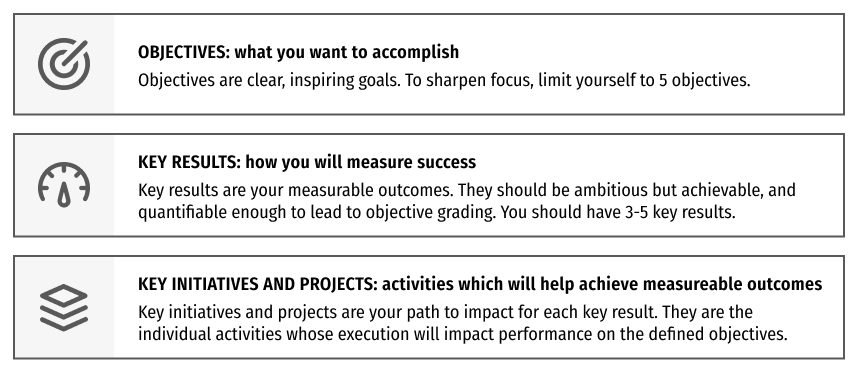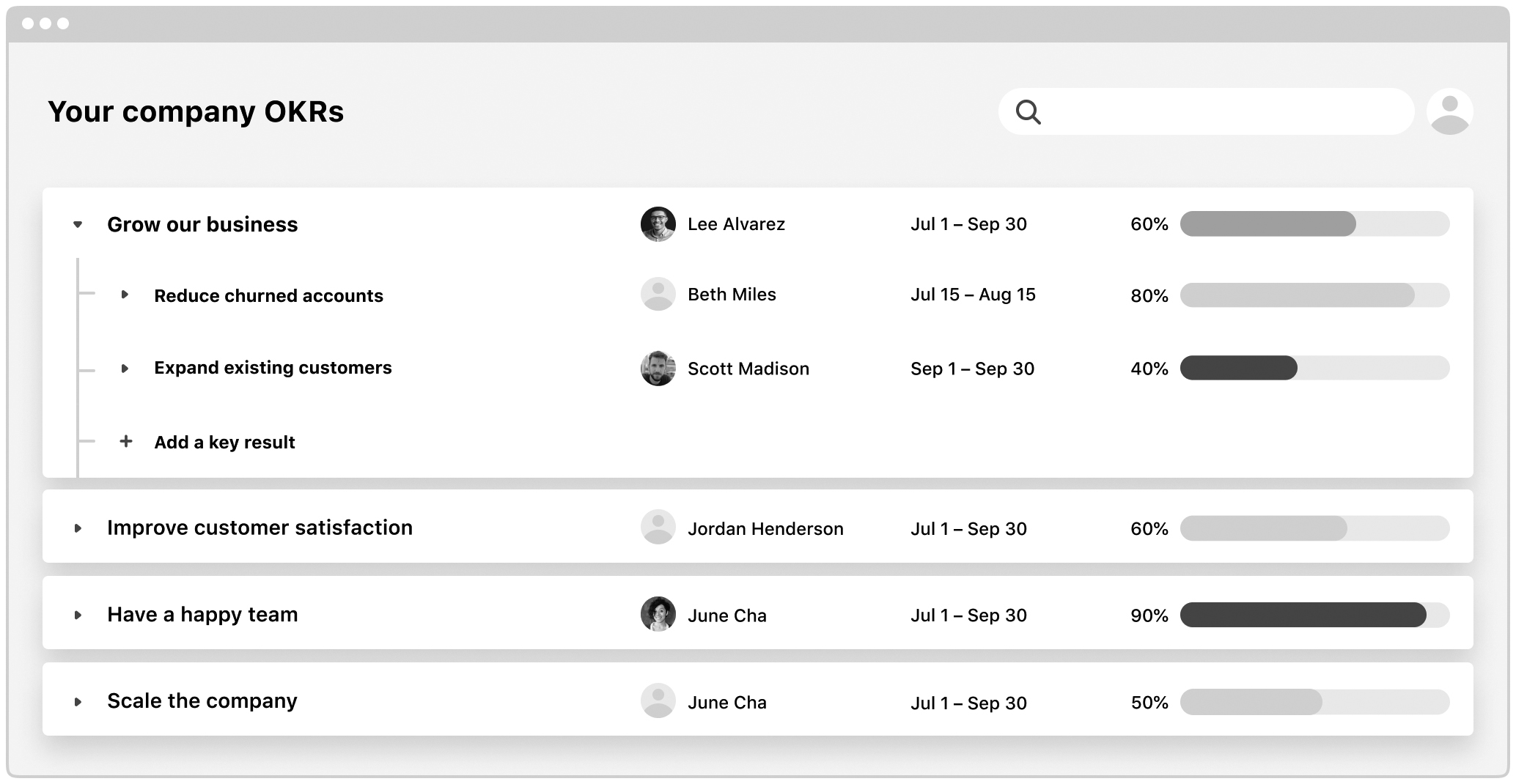What are OKRs?
Getting started with OKRs requires an understanding of the core components of the OKR framework.
OKR definitions

Key Initiatives tend to be focused efforts spearheaded at the most senior levels in an organization, while Projects, which are reflected in the Microsoft Viva Goals solution, are applicable throughout an organization.
The OKR Framework
Objectives begin at the organization level, generally with 3-5 annual or quarterly goals that steer the direction of the organization. Each Objective is usually supported by 3-5 Key Results.

Once organization-level OKRs have been agreed upon, the following steps are taken:
- If starting with annual OKRs, OKRs are broken down into manageable time periods, like quarters or semesters.
- No matter which time range your organization is using, OKRs are shared with departments and teams so they can develop their own OKRs based on organization-wide OKRs.
Key Initiatives and Projects are added on an as-needed basis to reflect the work that needs to be completed, either manually or by using integrations.
History of OKRs
OKRs have a long history that can be traced back to 1954 when Peter Drucker developed a strategic planning process called Management by Objectives (MBO). Management by Objectives revolutionized performance management and gained popularity, inspiring business managers and leaders at companies like HP and Xerox, leaders who later attributed their success to the adoption of Drucker’s framework.
Decades later, Andy Grove (former CEO at Intel) built upon this foundation to create the OKR framework. In the 1980s, Intel and Motorola were locked in a "life-threatening competitive challenge" to determine who would be the dominant chipmaker for computers of the future.
Grove used the OKR method to rally his entire company around this common purpose: at one point, Intel had 1,000 employees all focused on this one singular goal.
The strategy worked, Intel prevailed and secured 85% of the market.
More significantly, the OKR framework gained credibility as a powerful method for aligning businesses to achieve ambitious goals.
As OKRs became more widely known, many organizations within and beyond Silicon Valley began to use OKRs, leveraging static spreadsheets and systems that didn't make OKRs broadly visible or engaging.
This challenge prompted the rise of OKR software like Microsoft Viva Goals, providing organizations with the clarity and alignment, focus, and integrations that make OKRs relevant and motivating for every team member.